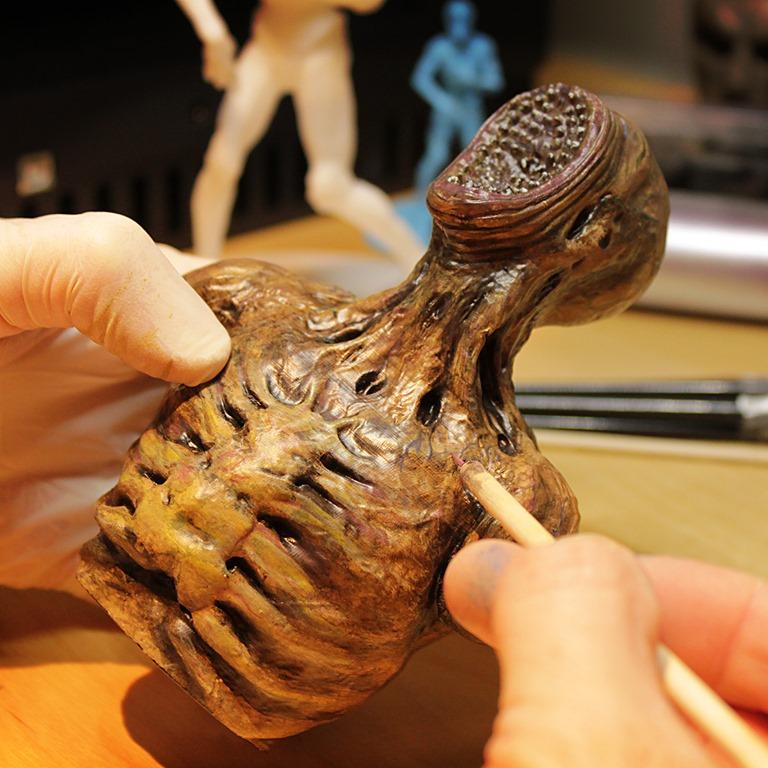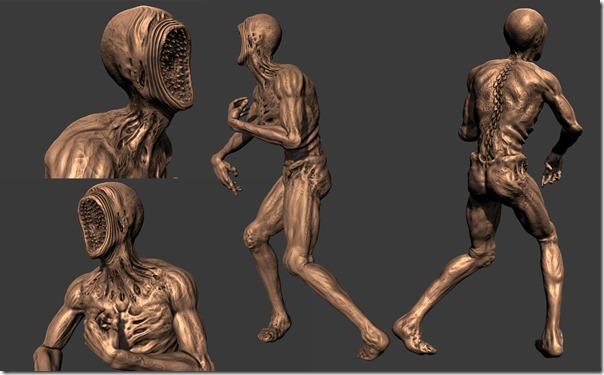With the advent of digital photography, just about anyone with the capacity to point and shoot could make even a smartphone camera generate photos of impressive quality. Amateur photographers could suddenly produce professional quality images. That phenomenon called to mind the technological leap from the old days of graphic design where fledgling designers literally began their work at the drawing board to the breathtaking heights of digital design that pretty much made the manual generation of text and images a charming an achronism. All of a sudden, most anyone with the will found a way to create impressive, professional looking graphics.
achronism. All of a sudden, most anyone with the will found a way to create impressive, professional looking graphics.
With the advent of 3D printing, yet another technological summit has been reached. If you have your own 3D printer, chances are you’ve experienced the thrill of producing something you’d never dreamed you were capable of creating. If technology has made artists of even those folks who formerly doubted they possessed so much as a shred of creative talent, consider what it has done for the truly gifted creative types among us. That’s definitely the case with Craig Barr, whose 3D expertise and creativity showcase his own talent as well as the creative tools of his employer, Autodesk.
Barr brought a formidable-looking beast of his own creation, a sort of “zombie crossed with a lamprey” that he named “the Viscerator,” from its former virtual existence to 3D life. He used Maya, Mudbox, and Meshmixer, a trio of magical “Ms” from Autodesk. For Barr, it’s a thrill to design for 3D, but he’s found true fulfillment in seeing his creations realized in the physical world. He reflected:
“I’ve been doing a lot of work lately with everything from creature design, to reality-capture data processing, to modeling/sculpting/painting, all things very cool and interesting, but not anywhere near quite as fun as holding your design in your hands. To me, the ability to hold something in your hands that only previously existed on the screen (workstation or otherwise) has really brought the creative process full-circle.”
Barr produced a video demonstrating the workflow of his Viscerator project (check it out at the bottom of this article!). He described how he began his design process with a model of a human body he got from Mudbox and then modified in Maya. Back in Mudbox, he proceeded to make more extensive adjustments to the body, sculpting and building up the craggy musculature and gaping mouth that comprises much of the face of the creature, which grows increasingly more grotesque as Barr works his magic. He used the vector replacement mapping (stamp tool) in Mudbox to create those deadly looking fangs.
creature, which grows increasingly more grotesque as Barr works his magic. He used the vector replacement mapping (stamp tool) in Mudbox to create those deadly looking fangs.
Barr wanted to add more intricate details to the Viscerator, so he went back to Maya and cut the model so he could enlarge it enough to work first on the upper half of the figure and then the lower half. He moved the components into Meshmixer, which he explained he finds ideal for completing details and then 3D printing.
When it was finally time to 3D print his malevolent masterpiece, Barr set the Zortrax M200 3D printer to print at 0.09 mm resolution to allow for as much detail as possible. The material he chose to use is the Z-ULTRAT filament, a durable thermoplastic (it’s a form of ABS) made by Zortrax. With Z-ULTRAT, Barr finds that you can get a really nice semi-matte surface, which he finds ideal for the hand-finishing he performs.
Since he was printing at a high resolution, he selected a medium fill so that the figure would be fairly dense. It took around 20 hours to print the upper half as a bust of the Viscerator and very little time to remove the supports and clean the surface with a small pick tool, a file, and some sandpaper.
After cleaning up the model, he sprayed it with Dupli-Color Adhesion Promoter that works something like a primer and is great with ABS material. It’s fascinating to watch the rest, as Barr, clearly an accomplished artist, uses paint (it looks like acrylic) to create the incredibly lifelike flesh, bones, and other details of the menacing-looking monster.
As he wraps up the demo, Barr makes a great pitch for the Zortrax M200 3D printer, remarking that he has never had a misprint when using this high-quality machine.
I sure hope to see more of this gifted 3D artist’s work. Have you created your own monster using 3D design platforms and brought it to life with 3D printing? Let us know in the 3D Printed Viscerator Monster forum thread over at 3DPB.com. Check out the video below detailing Barr’s design process and his 3D printing of the Viscerator bust.
Subscribe to Our Email Newsletter
Stay up-to-date on all the latest news from the 3D printing industry and receive information and offers from third party vendors.
You May Also Like
HILOS Launches Studio OS for AI-Driven 3D Printed Shoe Design
At Milan Design Week, footwear 3D printing startup HILOS has unveiled its latest development, Studio OS. Introduced at the historical Villa Bagatti Valsecchi, the platform is meant to redefine how...
3D Printing Webinar and Event Roundup: April 28, 2024
In this week’s 3D Printing Webinar and Event Roundup, the Ceramics Expo is taking place in Michigan, Stratasys continues its advanced training courses, and SPE is holding a Polymer Characterization...
Initial Speakers and Sponsors Announced for Additive Manufacturing Strategies 2025
Nearly a year away from the event, the Additive Manufacturing Strategies (AMS) 2025 conference is already beginning to take shape. Building upon the success of 2024’s summit, AMS has established...
HP & INDO-MIM Collaborate to Boost Metal 3D Printing in India
HP Inc. and INDO-MIM, a US- and India-based supplier of metal injection molding (MIM) powders and contract manufacturer, have announced that the two companies will collaborate to accelerate additive manufacturing...
































